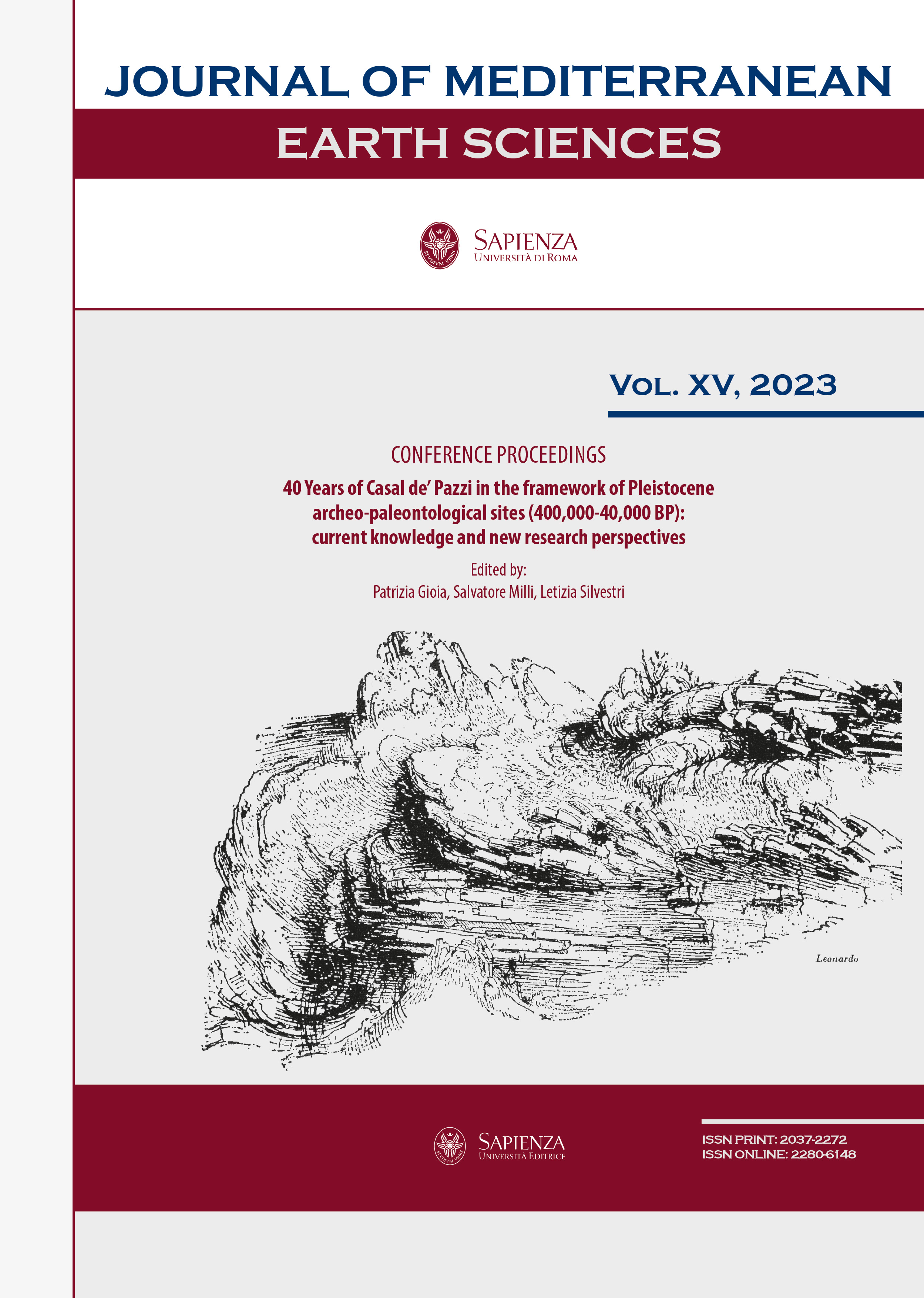La Polledrara di Cecanibbio (Rome, Italy): preserving and narrating the Pleistocene
DOI:
https://doi.org/10.13133/2280-6148/18174Abstract
The scientific interest of the deposit, the perfect state of preservation of the palaeontological finds whose fossilization was favoured by the volcanic sediments in which they were embedded and the variety of their position - from bones transported and dislocated by waters to those in anatomical connection within the marshy area - motivated the implementation of a project for the musealisation of the site. The museum, realized on the occasion of the Jubilee 2000, allowed to preserve the deposit in situ, to enhance it and make it accessible to the public. The site museum project has been in progress for some years and is progressing through various phases of intervention. To allow an immersion in the Pleistocene landscape and to restore form and life to the innumerable remains of the many species visible on the paleosurface, two large panels have been created, placed on the internal walls of the building. The animals depicted in the foreground are life-size, almost in contact with the paleosurface that shows their bones, with the intention of creating a huge window that opens onto the biodiversity of 300,000 years ago. As part of the enhancement and promotion of the Museum, in 2017 a competition was launched for primary and secondary schools in Rome aimed at creating the new official Logo of the Museum, which ended with two exhibitions set up at the Museo Nazionale Romano and, in collaboration with the XIII Municipality, at Villa Carpegna, headquarter of the Quadriennale di Roma. At the end of 2022, the didactic apparatus was renewed with new panels and a short film that reconstructs the formation of the deposit in 3D, while the preparation of a different lighting that enhances the paleosurface is still underway. Other more extensive projects are planned in the short term in order to promote and enhance the value of this unique deposit. In particular, a new arrangement of the green area surrounding the museum, a parking area for visitors, a didactic area destined to various audiences, laboratories for the study and conservation of materials, open to the public have been planned. In this new phase, particular attention has been paid to visitors with disabilities, in order to offer better conditions of use and make the Museum more inclusive.
Downloads
Published
How to Cite
License
The submission has not been previously published, nor is it before another journal for consideration (or an explanation has been provided in Comments to the Editor).


